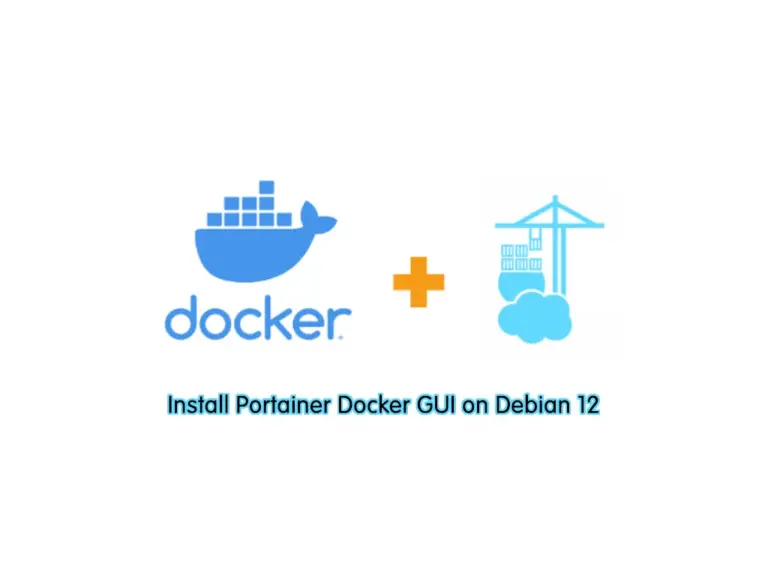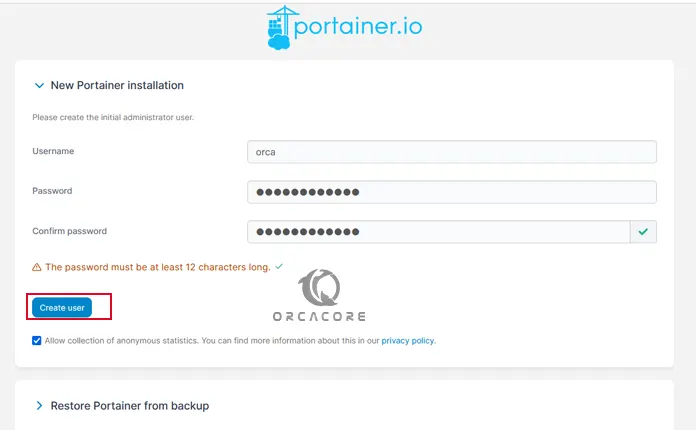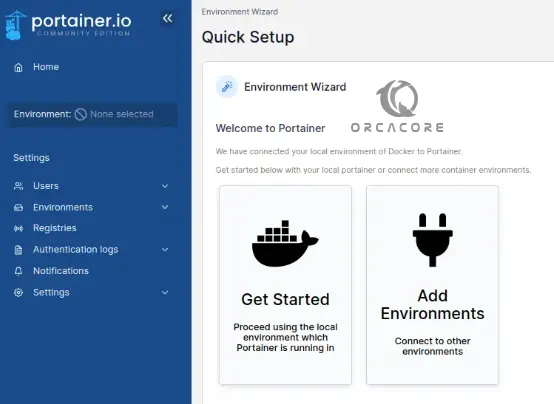Share your love
Install Portainer Docker GUI on Debian 12

This tutorial intends to teach you to Install and Access the Portainer Docker GUI Tool on Debian 12 Bookworm. Portainer is a great tool for managing your Docker containers from a graphical user interface. This is a good choice for those comfortable with a graphical interface instead of a command line interface.
Steps To Install Portainer Docker GUI on Debian 12
To install Portainer, you need some requirements, then, follow the rest of the article to complete this guide.
Step 1 – Requirements for Portainer Installation
You must log in to your server as a root or non-root user with sudo privileges. To do this, you can follow this guide on Initial Server Setup with Debian 12 Bookworm.
Then, you must have Docker installed on your server. To do this, you can follow our guide on Install Docker CE on Debian 12 Bookworm.
Also, you must have Docker Compose installed on your server. For this purpose, you can visit this guide on Install Docker Compose on Debian 12 Bookworm.
Step 2 – Install Portainer on Debian 12
At this point, you can start to install Portainer container management on your server.
Create Docker Volume For Portainer
First, you need to create a volume to store Portainer data. Docker volumes are file systems mounted on Docker containers to preserve data generated by the running container. To do this, run the command below:
docker volume create dataThen, verify it by using the command below:
docker volume lsOutput
DRIVER VOLUME NAME
local dataDownload and Run Portainer Docker Image
Now you can use the following command to download and run the Portainer docker image:
docker run -d -p 8000:8000 -p 9000:9000 --name=portainer --restart=always -v /var/run/docker.sock:/var/run/docker.sock -v data:/data portainer/portainerOutput
latest: Pulling from portainer/portainer
772227786281: Pull complete
96fd13befc87: Pull complete
0bad1d247b5b: Pull complete
b5d1b01b1d39: Pull complete
Digest: sha256:47b064434edf437badf7337e516e07f64477485c8ecc663ddabbe824b20c672d
Status: Downloaded newer image for portainer/portainer:latest
1dccea07ea208064bef4bac26ba2b20c35436ea2b062e530c226fb19c2831565Next, check your Portainer status with the following command:
docker psOutput
CONTAINER ID IMAGE COMMAND CREATED STATUS PORTS NAMES
1dccea07ea20 portainer/portainer "/portainer" 18 seconds ago Up 17 seconds 0.0.0.0:8000->8000/tcp, :::8000->8000/tcp, 0.0.0.0:9000->9000/tcp, :::9000->9000/tcp, 9443/tcp portainerStep 3 – Access Portainer Dashboard on Debian 12
At this point, your Portainer is running on port 9000. You can access it through the web interface by typing your server’s IP address in your web browser followed by 9000:
http://your-server-ip:9000In the first screen, you should create the initial administrator user.

Then, you will see your Portainer dashboard.

You can now easily host your application on the containerization platform via a web-based interface.
For more information, you can visit the Portainer Docs page.
Conclusion
You have learned to Install and Access the Portainer Docker GUI Tool on Debian 12 Bookworm. As you saw, it is a good tool for those who want to manage their docker containers from a graphical user interface.
Also, you may interested in these articles:
Install Portainer on Debian 11
Install Portainer Docker GUI Tool on AlmaLinux 8
Hope you enjoy it. Please subscribe to us on Facebook, Instagram, and Twitter.



